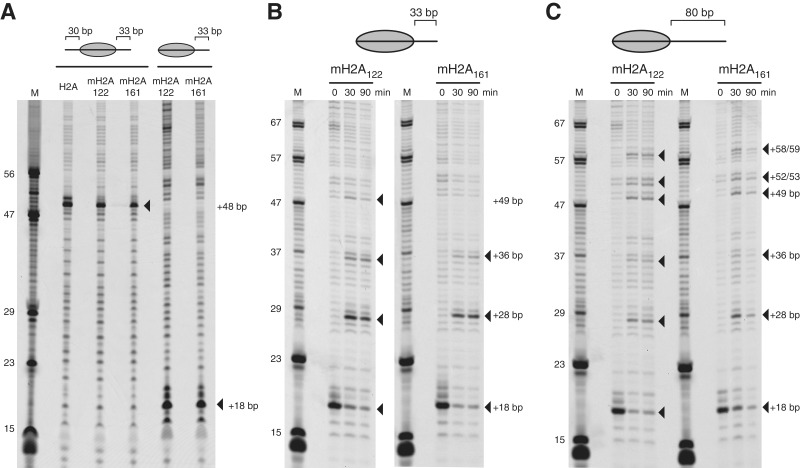Figure 4.
The presence of the macro-linker does not affect the position of the histone octamer on the 601 sequence in the presence or absence of the Chd1 remodeler. Histone octamer positions were mapped by photochemical cross-linking of APB-modified histone H2B as previously described (35,36). (A) Centrally positioned (30-N-33) and end-positioned (0-N-33) nucleosomes were mapped containing major-type H2A, mH2A122 and mH2A161 as indicated. For all nucleosomes, the predominant sites of cross-linking were found ∼2 turns of DNA from entry/exit sites expected from positioning by the 601 sequence. (B) End-positioned 0-N-33 nucleosomes containing either mH2A122 or mH2A161 were mapped before and after sliding with Chd1. After 30 or 90 min incubations with Chd1, most new cross-linking sites were observed for both mH2A122 and mH2A161 nucleosomes (filled triangles). (C) Similar nucleosome sliding experiments as shown in (B), except using 0-N-80 nucleosomes. For the nucleosome sliding experiments in (B) and (C), the close match of new cross-linking sites for mH2A122 and mH2A161 nucleosomes show that the macro-linker does not impair the direction of sliding by Chd1, nor alter the preferential locations of repositioned histone octamers in the context of the 601 positioning sequence.

